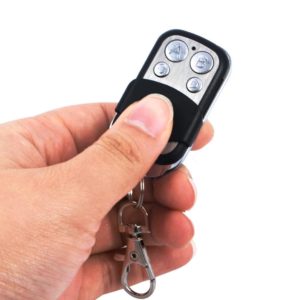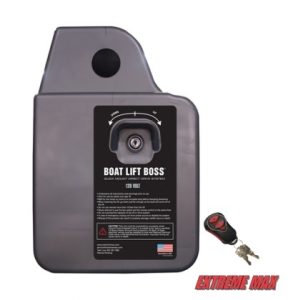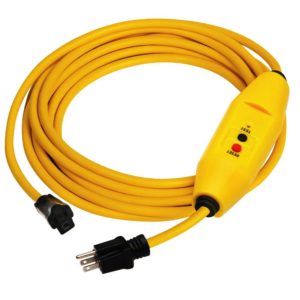Is a Lift Motor needed for a Boat Lift?
Do you need a lift motor for your boat lift?
Are you still struggling to turn your Boat Lift Wheel?
See https://www.youtube.com/watch?v=7j_LCDD8g2c&list=PLV6h7EzFPiaB5SCPfZtJGsuPLWYkIX8Ol&index=4
A DC powered Lift Boss motor makes it simple and safe to use a boat lift motor – with no effort!.
If you can push a button to open your garage door, you can raise a 7000# boat the same way.
Read part one of this series (https://wisconsinpws.com/wp-admin/post.php?post=5322&action=edit) to understand the AC version of the Lift Boss. AC power is one of three options available to you. We extensively covered the pros and cons of using the AC option and the use of extension cords.
In this part, we discuss the options for DC powered boat lift motors, which require no extension cords.
There are two DC options – the 12 Volt and 24 Volt system. Fortunately for you, they both use the SAME Lift Boss motor and can be upgraded at any time. Only the charging system changes.
Here are some FAQ about a lift motor
- Do I need a 12 Volt or 24 Volt System?
If you are the person who lowers the boat in the morning and raises it once at night, we are going to recommend a 12 Volt system. You will have plenty of time during the course of a normal day to recharge your system. - What if I raise my boat frequently during the day?
We will recommend the 12V system and give you an option for the 24V system. You are borderline between the two systems. Another alternative is to use a higher wattage solar panel to help restore lifting capacity quicker. It makes sense that you will use your boat LESS without a lift motor. Need to know how to calculate the total weight of your boat? See https://wisconsinpws.com/wp-admin/post.php?post=4951&action=edit - Does your boat weigh under 5,000 lbs but you are still struggling to turn the wheel?
We recommend the12 Volt system based on your boat weight and the capacity of your boat lift. - What if I want to raise my boat FASTER?
If you want your existing 12V lift motor to raise the boat faster – we recommend converting it to a 24 V system regardless of weight. Caution – not all motors allow this. The Lift Boss does allow this conversion. Check with your dealer or call PWS for more information.
Additional Questions
- Will a car battery work on my boat lift?
No. You must use a Deep Cell Marine battery for ANY lift motor brand. Think of it this way – If you tried to start a car (without fuel in it) by keeping the key “on” for several minutes, the battery will wear down quickly. They are not made for lengthy power-draining applications. A deep cell battery is made to handle those demands. It still won’t start without fuel but that’s a different story. - What battery brand do you recommend?
The zero maintenance, sealed Interstate batteries we use have the capacity for the long power demands of a boat lift motor. - Do I need a voltage regulator?
If you connect a solar panel to your battery to keep it charged, it is important to include a solar regulator. The regulator will monitor and “regulate” the charging of the battery so that it will not be overcharged. Overcharging your battery will damage it and decrease its overall life span. This also prevents your battery from leaking charge back to the panel.
Remember – A DC Powered Lift Boss motor makes it simple and safe to use a boat lift.
Solar Panel Wattage and Output
You have to re-charge the battery(s) as you use them. Proper charging of your marine batteries with a solar panel requires that you get the correct panel and it must be properly sized for your motor. This will allow the battery to be a consistent and reliable source for your system.
To ensure that your battery is charged properly, make sure the Voltage output is correct for the battery(s) you are using. A 12 V panel should only be used on a single 12-volt battery. If you use it on a 24 V setup you are cutting your charge rate in half.
However, if you tend to use the lift several times a day, then you would be better off to go with a 20 Watt kit with a 12V or 24V output depending on how many batteries you are using. It is key that the output voltage of your solar panel is adequate and in line with the voltage of your battery.
What will batteries connected in Series accomplish?
Batteries in a series connection will increase your voltage from 12V to 24V. This arrangement will not increase your amps, or the amount of electricity moving through the circuit; otherwise known as amp hours (A/H). It will give your lift motor access to 24V of power, thus resulting in a faster lift speed; effectively doubling the rpm of the motor.
The key to this setup is that there is not an increase in A/H, or current, and therefore no increase in the rate at which electricity is delivered to the motor. The extra speed comes from the extra voltage, not the A/H. Your motor simply “sees” that it is connected to 24V as opposed to a 12V battery.
In summary, use the correct lift motor for your boat lift. Then power it with the correct solar array for your needs.
Need Help Planning a solar system For Your boat lift?
Contact Pier & Waterfront Solutions TODAY!
Do you have a friend that may be interested in this information? Please share a link to this page with them.
PWS is located at 7325 St. Hwy 57. That’s 1 mile North of County MM (Hwy 42) and 3 miles South of Sturgeon Bay at the Idlewild Road intersection.








